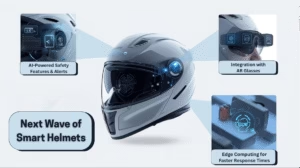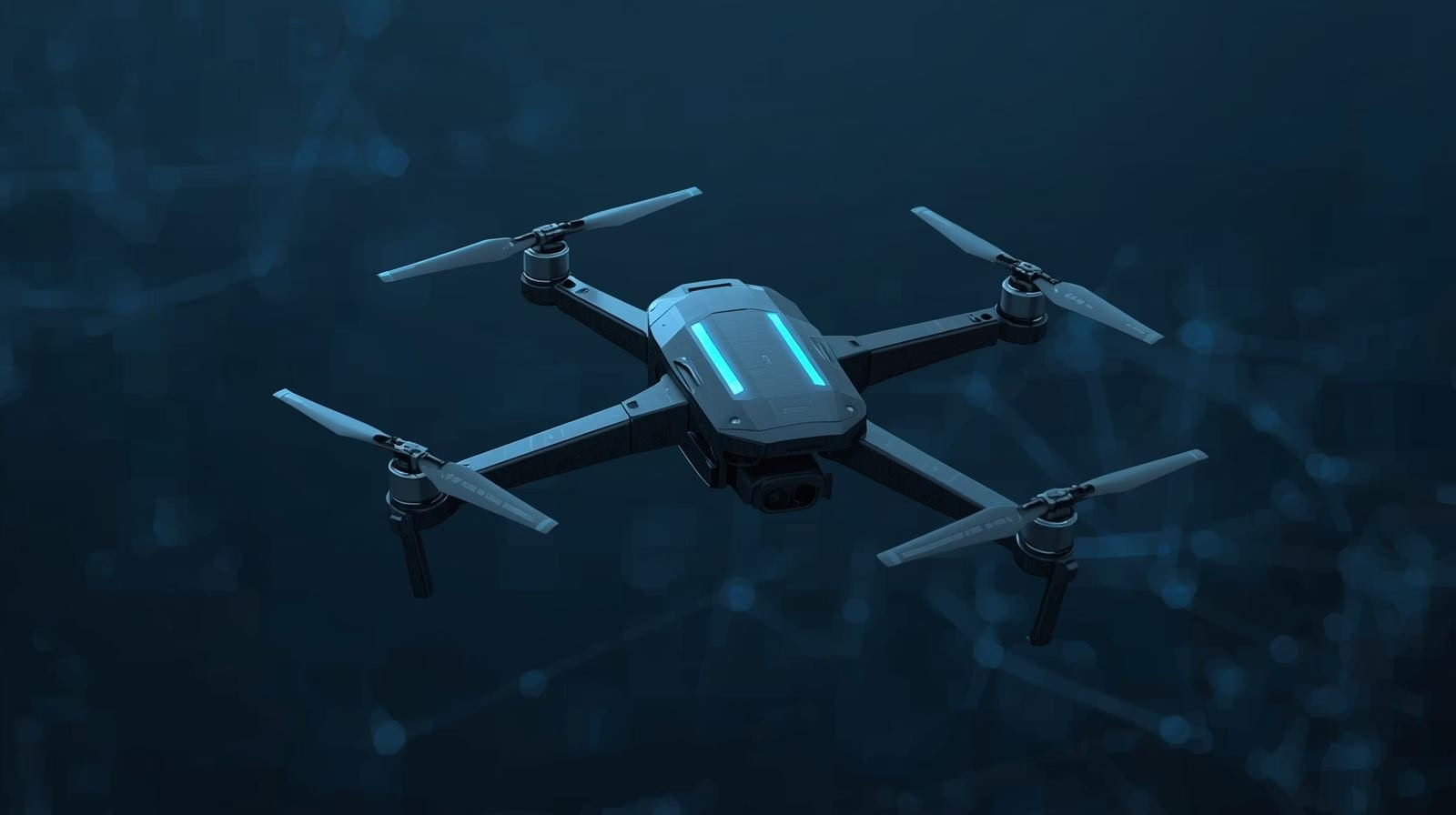Wearing a helmet is not just for protection but also proactively alerts you before the accident happens. But the rise of the smart helmet transforms its singular purpose: passive protection, into an intelligent, connected wearable. These devices are powered with embedded electronics, a network of sensors, communication systems, and Internet of Things (IoT) connectivity that significantly transform personal safety. This is not just a trend; it’s about providing improved safety, real-time data, and seamless connectivity to protect the wearer.
From Simple Plastic to Smart Protection: What’s Inside a Smart Helmet?
The smart helmet is integrated with a complex array of electronic components. Basically, the outer shell of the helmet is designed for physical protection. Its real intelligence lies within the shell, where electronics and smart engineering transform safety gear into a proactive device. A strong partnership with Syrma SGS is a key to enable this flawless function. We don’t just build circuits; we build capabilities. Let’s breakdown the significant parts of smart helmets:

- Inertial Measurement Unit (IMU): The IMU works with the combined power of an accelerometer and a gyroscope to precisely detect sudden orientation changes, falls, and impacts, which is a sign for crash detection.
- Microcontroller (MCU): The MCU is the brain of the helmet, processing all the data from the sensors in real-time.
- GPS Module: It accurately provides the turn-by-turn navigation and rider’s live location, which is crucial to track them quickly in case of emergency situations.
- A Custom PCB: The excellence of a smart helmet is hidden within its embedded system, influenced by specialized PCBs (printed circuit boards). PCBs are composed of numerous sensors, communication modules, and microcontrollers, which need to be shielded within a limited space.
- Connectivity Modules: The integration of Wi-Fi and Bluetooth modules enables effective communication with smartphones and other devices.
- User Interface: A smart helmet communicates with its users through various mechanisms, providing crucial information. For instance, speakers and microphones enable hands-free voice commands even in loud environments like a busy road or a factory. In advanced models, HUDs (Heads-Up Displays) are a vital safety feature used to see data like their GPS directions and speed without taking their eyes off the road.
Real-World Use Cases That: Beyond Imaginations
The efficiency of smart helmets is not just limited to motorcyclists. Their ability plays a significant role in providing proactive safety and data-driven insights across multiple industries.

Construction and Mining: This is a high-risk job site, where the employees need adequate safety measures and monitoring. A smart helmet with the integration of geofencing and GPS allows us to track a worker’s location and alert the supervisor when workers enter a hazardous zone. Environmental sensors can detect potential risks such as high noise levels or dangerous gas leaks, providing immediate warning to the users. This is a key to reducing downtime and errors.
Defense and First Responders: Firefighters and EMTs can use smart helmets in emergency situations. It provides critical hands-free communication and situational awareness. The integrated cameras send live-stream video to a command center, and its communication channels enable real-time collaboration between team members. From city roads to battlefields, smart helmets are used for safety and efficiency.
Even for motorcyclists, more than just protection, it alerts the user with automatic accident detection and emergency response. When the rider is inactive, the gyroscope and accelerometer sense the impact and send an SOS alert to emergency services.
How Smart Helmets Talk and Why That Matters
A smart helmet is designed with the intelligence to connect and communicate. The true power lies in its ability to exchange data through a mix of connectivity technologies, and each has a significant role to play:
- Bluetooth Connectivity: Bluetooth is the most common form of communication device, allowing the helmet to connect with smartphones or other devices for music playback, hands-free calls, and voice-activated navigation. It is also facilitated with rider-to-rider communication with intercom systems for industrial or recreational settings.
- Wi-Fi & Cellular (4G/5G): For mission-critical applications, the integration of cellular and Wi-Fi devices is a game-changer. While cellular connectivity can be used for a continuous link to the cloud, Wi-Fi provides quick data uploads to a known network environment. A helmet’s in-build camera sends a live-streaming video to a remote command center in a critical situation.
- IoT Integration: The smart helmet uses an Internet of Things (IoT) to connect with an entire ecosystem and sends continuous data to the cloud for analysis. This cloud integration allows monitoring real-time data, providing the team’s live location and status to safety managers. The data collection is not just for monitoring; it improves safety protocols, provides proactive alerts, and identifies potential hazards.
Behind the Scenes: Who Builds These Smart Helmets Anyway?
The manufacturing process of a smart helmet is incredibly complex. Embedding a critical network of electronics into a helmet shell can withstand vibration, impact, and environmental stress. A seamless fit of every component is non-negotiable. This is where the expertise of an Electronics Manufacturing Services (EMS) like Syrma SGS becomes a crucial asset. We provide robust and reliable services from the custom PCB to the final assembly. We are extremely capable in electronics assembly, IoT engineering, rapid prototyping and testing, which allow us to overcome any of the toughest manufacturing challenges.
As one of our project leads puts it this way, “The process is not just about making the electronics work; it is about making them work flawlessly for years and being a reliable solution to a problem that the users face every day. This is the true manufacturing excellence our team is doing.
The Future of Smart Helmets: What’s Next?
The advancements in smart helmets are just a beginning. The next wave of innovation will make the device more intuitive and life-saving:

- AI-Powered Safety Features and Alerts: The integration of AI (artificial intelligence) and ML (machine learning) in smart helmets is the true intelligence. AI algorithms are set to process the data collected by helmet sensors to predict problems early and make informed decisions in real time. By empowering emergency response systems, AI can actively monitor the heart rate and head movements of riders to detect the signs of fatigue or distraction.
- Integration with AR Glasses: Imagine a helmet designed with a heads-up display that directly shows you the real world, such as speed, map, and overall critical information. Augmented Reality (AR) technology allows users to visualize digital instructions to create situational awareness about potential hazards.
- Edge Computing for Faster Response Times: A smart helmet is equipped with added intelligence to process data instantly. Edge computing is a pathway to fetch data from the cloud to the device itself. Instead of sending notifications to a remote server for analysis, the helmet can make real-time decisions and alert users in milliseconds. This is crucial to avoid sudden potential hazards and save the rider’s life.
Why Now Is the Time for OEMs to Jump In
Smart helmets are no longer prototypes—they are completely ready to scale. The market is expanding rapidly, and OEMs have a unique chance to stand ahead of the competition and establish themselves as pioneers in a new product category. However, the integration of complex electronics into certified safety gear is a daunting task. This is a place where a partnership with experienced electronics system design and manufacturing companies like Syrma SGS is helpful.
It’s Not Just a Helmet—It’s a Guardian on Your Head
A collaboration with our proven expertise can accelerate the development cycle and reduce manufacturing costs. We, Syrma SGS, provide rapid prototyping, time-to-market advantages over competitors, and end-to-end services from concept creation to a final product. Our expertise can easily navigate the complexities of compliance, supply chain management, and manufacturing.
In this new era, safety is proactive, not just reactive. After research, we are redefining the technology to turn passive head protection into an intelligent system that is really safe at work and on the road.
Disclaimer: Images used in this Blog are AI generated



